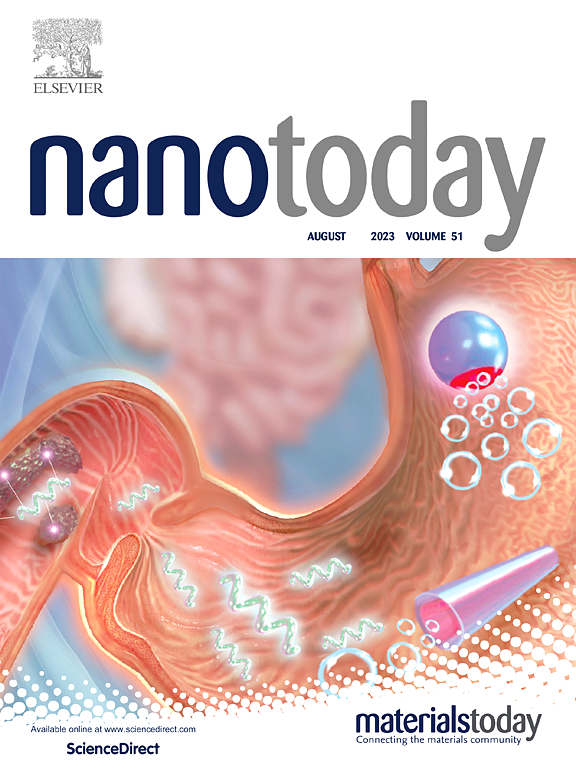Provoking endogenous protein-derived Zn2+ de-hijacking for metalloimmunotherapy
IF 10.9
1区 材料科学
Q1 CHEMISTRY, MULTIDISCIPLINARY
引用次数: 0
Abstract
Metalloimmunotherapy involves utilizing metal ions to achieve promising immunotherapy. However, the exogenous metal ions may cause unexpected severe side effects in metalloimmunotherapy due to the unstable and non-specific characteristics of nanomaterials. Herein, drawing inspiration from the utilization of endogenous intracellular Zn-storing proteins, a nonmetallic nanodrug has been developed to induce the endogenous protein-derived Zn2+ de-hijacking for metalloimmunotherapy. Specifically, the nonmetallic nanodrug was designed using disulfide-doped hollow organosilicon co-loaded with 5-aminolevulinic acid and glutathione-responsive nitric oxide (NO) donor (NIC), functioning as a STING activator. Upon internalization, subsequent near-infrared laser irradiation can prompt the STING activator to elicit mitochondrial impairment and discharge mitochondrial DNA, thereby initiating the STING pathway. Simultaneously, the interplay between NIC and glutathione results in the production of NO to induce the liberation of protein-derived Zn2+, thereby promoting STING activation without necessitating additional metal uptake. Overall, this work provides a safe and promising strategy for the development of metalloimmunotherapy.
激发内源性蛋白衍生的Zn2+解劫持用于金属免疫治疗
金属免疫疗法是利用金属离子实现有前景的免疫治疗。然而,由于纳米材料的不稳定性和非特异性,外源金属离子可能在金属免疫治疗中引起意想不到的严重副作用。本文从内源性细胞内锌储存蛋白的利用中获得灵感,开发了一种非金属纳米药物来诱导内源性蛋白衍生的Zn2+解劫持用于金属免疫治疗。具体来说,该非金属纳米药物是用二硫化物掺杂的空心有机硅与5-氨基乙酰丙酸和谷胱甘肽响应型一氧化氮(NO)供体(NIC)共负载,作为STING激活剂来设计的。内化后,随后的近红外激光照射可促使STING激活剂引起线粒体损伤并释放线粒体DNA,从而启动STING通路。同时,NIC和谷胱甘肽之间的相互作用导致NO的产生,从而诱导蛋白质衍生的Zn2+的释放,从而促进STING激活,而不需要额外的金属摄取。总之,这项工作为金属免疫治疗的发展提供了一个安全而有前途的策略。
本文章由计算机程序翻译,如有差异,请以英文原文为准。
求助全文
约1分钟内获得全文
求助全文
来源期刊

Nano Today
工程技术-材料科学:综合
CiteScore
21.50
自引率
3.40%
发文量
305
审稿时长
40 days
期刊介绍:
Nano Today is a journal dedicated to publishing influential and innovative work in the field of nanoscience and technology. It covers a wide range of subject areas including biomaterials, materials chemistry, materials science, chemistry, bioengineering, biochemistry, genetics and molecular biology, engineering, and nanotechnology. The journal considers articles that inform readers about the latest research, breakthroughs, and topical issues in these fields. It provides comprehensive coverage through a mixture of peer-reviewed articles, research news, and information on key developments. Nano Today is abstracted and indexed in Science Citation Index, Ei Compendex, Embase, Scopus, and INSPEC.
 求助内容:
求助内容: 应助结果提醒方式:
应助结果提醒方式:


